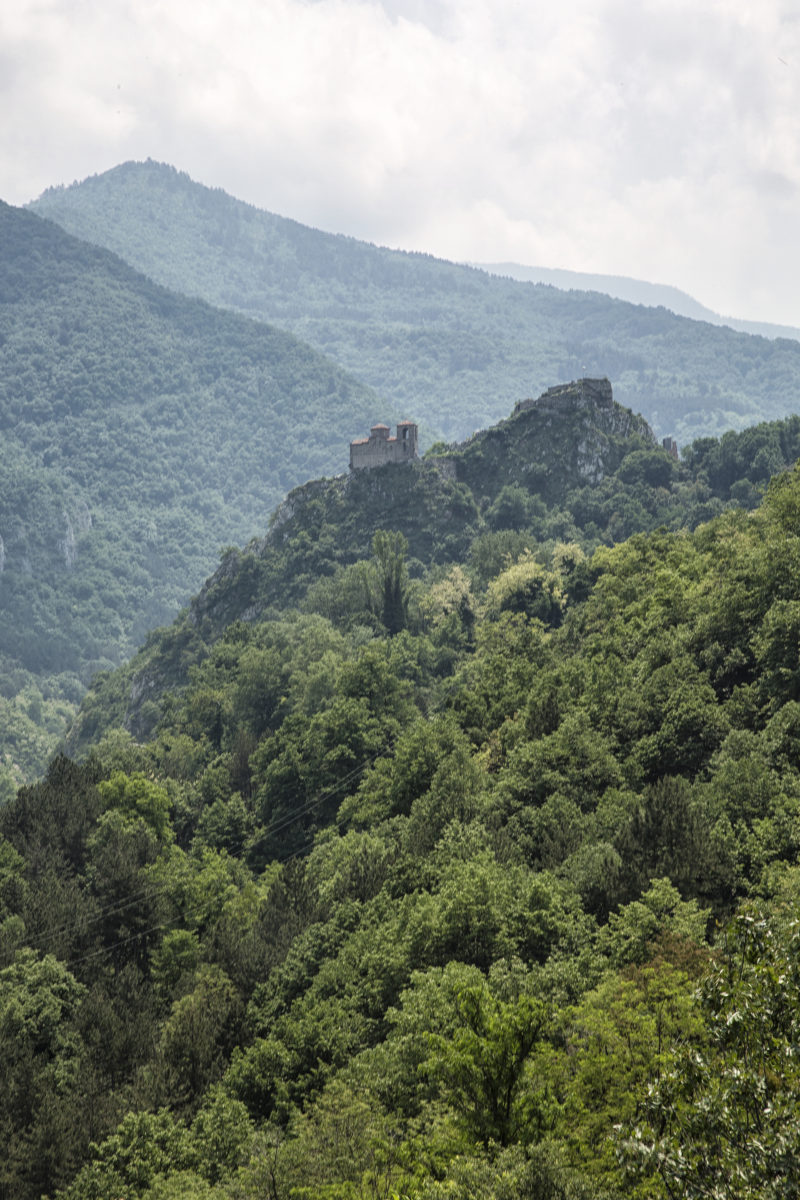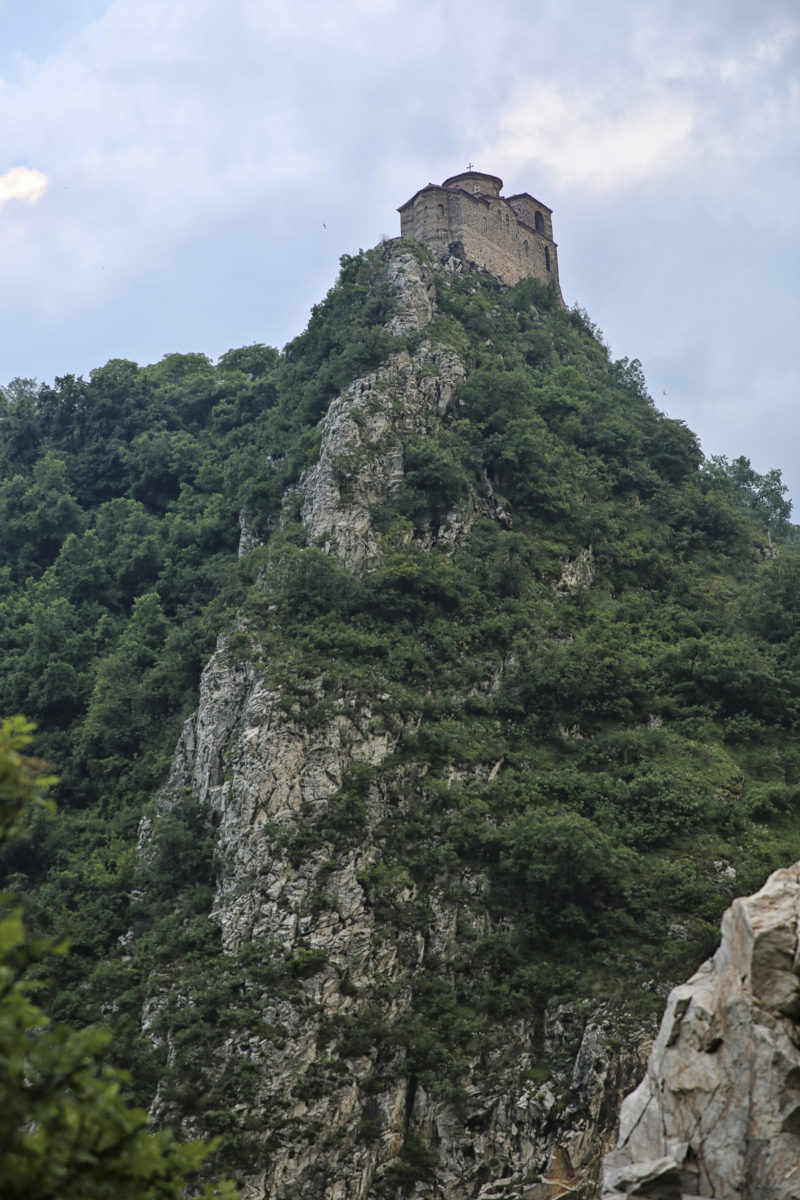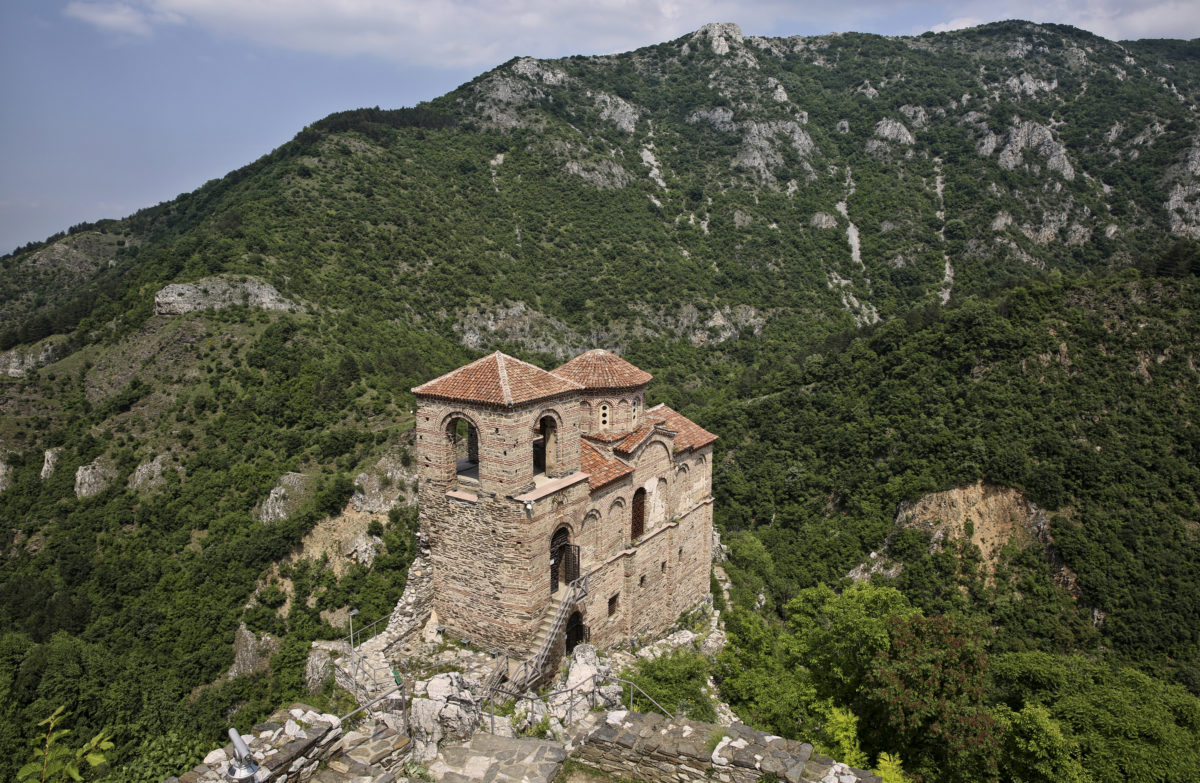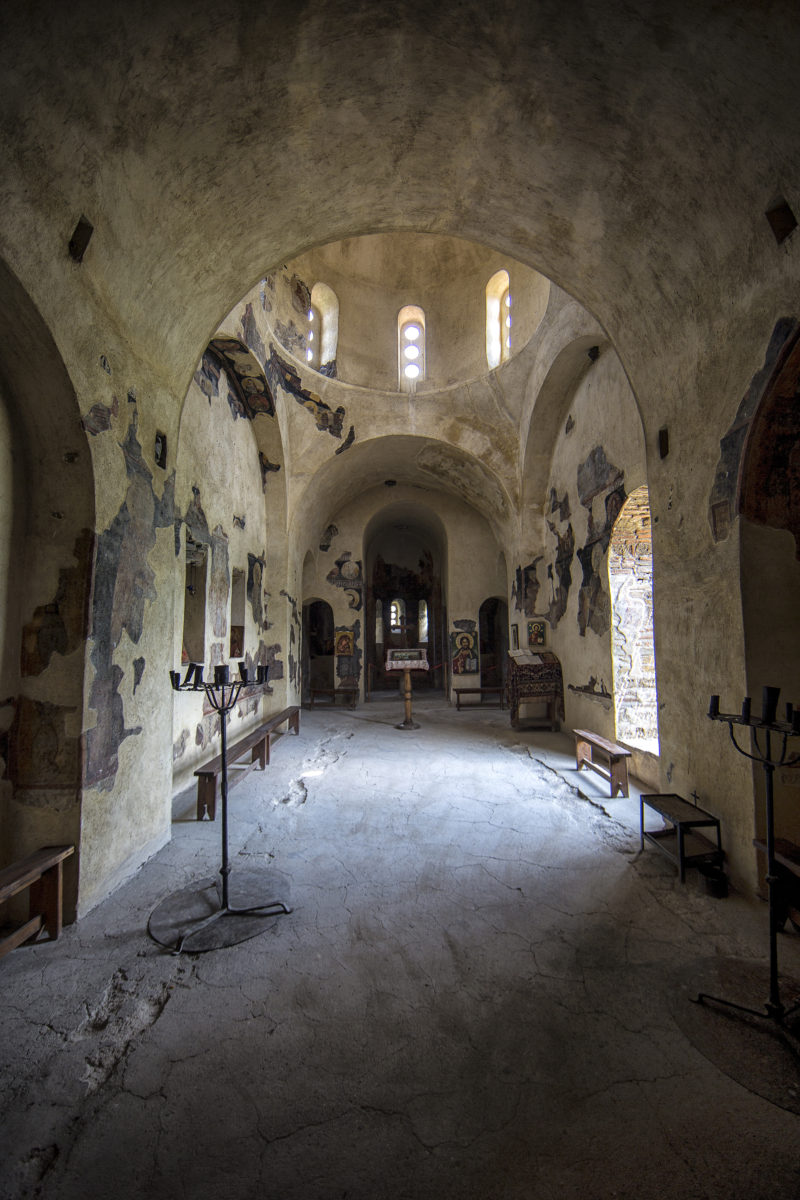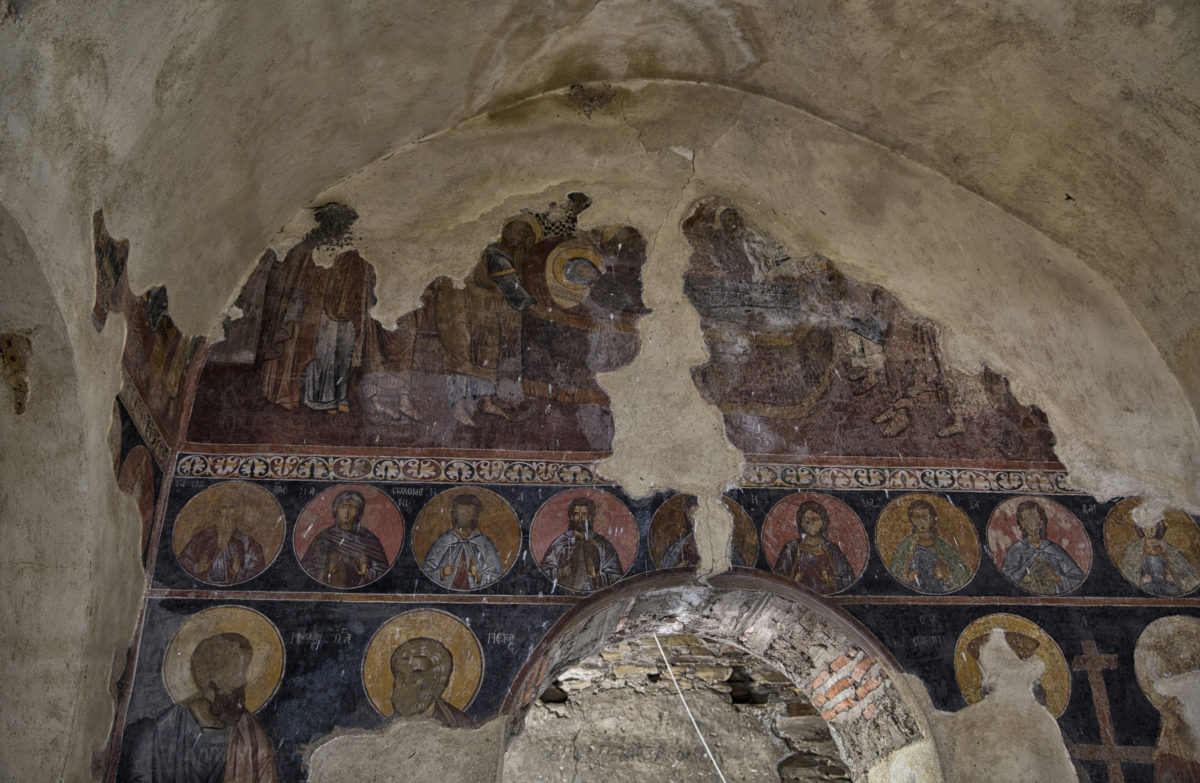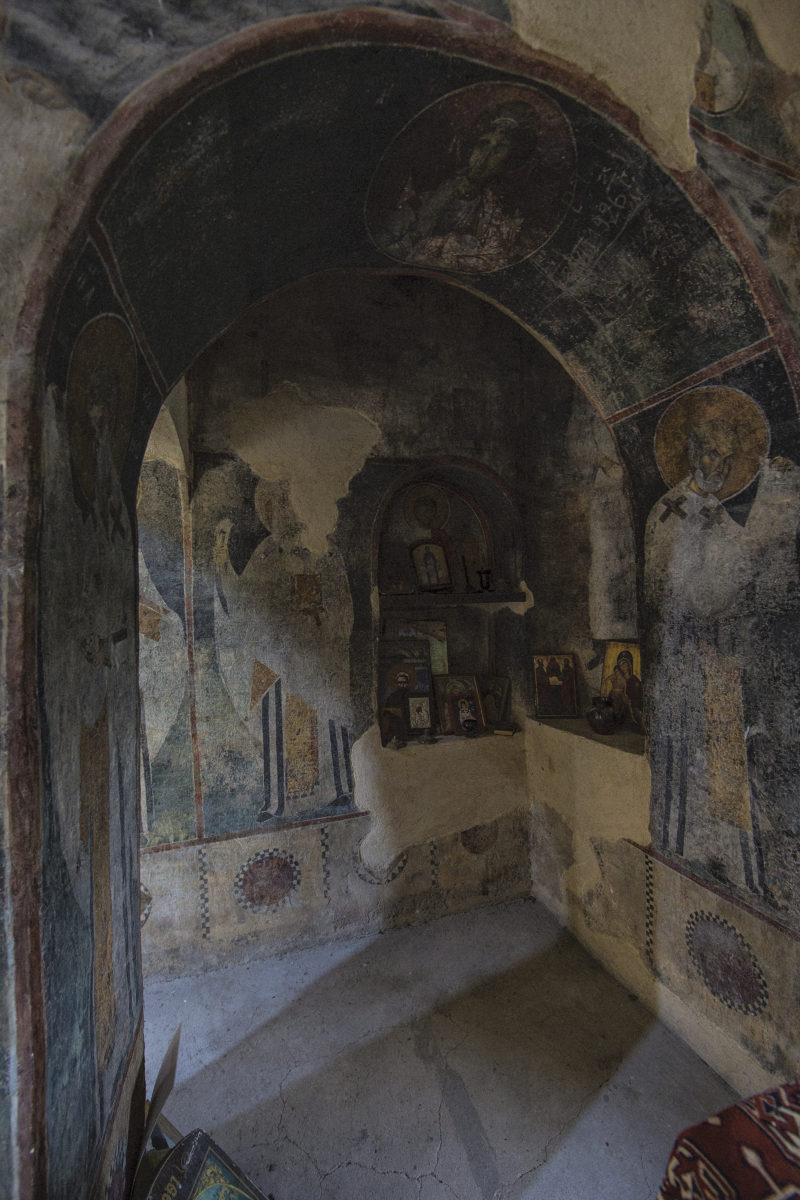Asen’s Fortress near the town of Asenovgrad in Southern Bulgaria was built in the 9th Century by the Byzantine Empire to guard the gate of the Aegean pass and to secure the Byzantine border in this area. Asen’s Fortress is located on a 300-meter-high isolated rock, on the northern slope of the Rhodope Mountains.
With drops that are almost vertical and at times even overhanging above the river below, it is impregnable on three sides.
In 1204, the fortress fell into the hands of the Crusaders of the Third Crusade who were commanded by the Belgian knight René du Trois. The knight withstood a 13-month siege laid by the forces of the Bulgarian Tsar Kaloyan (reign 1197-1207), according to The Chronicle of the Fourth Crusade.
In 1231, Tsar Asen II (reign 1218-1241) completed the largest expansion and rebuilding of the fortress, as proclaimed on a carved stone monument.
This is the reason why the fortress was later named after him. Asen’s Fortress was captured by Byzantium after Tsar Ivan Asen II‘s death, and regained by Bulgaria in 1344 under Tsar Ivan Alexander (1331-1371).
It was conquered by the Ottomans Turks during their invasion of Bulgaria at the end of the 14th century. After the death of the Ottoman Sultan Bayazid in 1402, there was a struggle for succession between his sons Suleiman and Musa Kesedzhi. Musa further fortified the Petrich Fortress but he couldn’t hold it and put it at the mercy of his brother. After Musa’s capitulation, the fortress was razed to its foundations, so it could no longer appeal to opponents of the throne as a strategic location. For some unknown reason only the fortress church was spared, and it is now one of the most notable examples of Medieval Christian architecture.
The fortress church or the Church of the Holy Mother of God is two-storey, cross-dome, one-nave church with a wide narthex and a big square belfry above it. The church is one of the oldest in all of Eastern Orthodoxy, and has a tower once used as a belfry and watchtower. The church was built around the 12th Century before the time of Tsar Asen II.
Whilst the upper story was certainly the church proper and the place of liturgy, the role of the lower story is unclear. There are theories that its lower story was constructed due to the rocky terrain or it may have served as a storage facility. Although it was common to reserve the lower story of a church for tombs, no human remains have been discovered inside.
At the turn of the 20th century, the Church of the Holy Mother of God was the terminus of two rival religious processions organised by the ethnic Greek and Bulgarian communities of Asenovgrad. These processions began after a man claimed to have seen lights and heard chants while passing near the then-abandoned church. Both processions end with a Divine Liturgy observed at night by the church.
The Unexplained
The architecture of the church is similar to the Ossuary of the Bachkovo Monastery which is the sole surviving building of the original Bachkovo monastery located just two kilometres away from Asen’s Fortress. Except for the Church of the Holy Mother of God and the Bachkovo Ossuary, there are no remains of the original two hectare Asen’s Fort complex or the original Bachkovo Monastery both of which were razed to the ground around the year 1402. It is not known why these two buildings were preserved almost completely intact.
The frescoes which line the walls of the upper story of the church date back to the 13th Century. The eyes of the saints have all been blinded. The eyes of the saints in the Bachkovo monastery ossuary have also all been blinded. A punishment reserved during the reign of Tsar Asen II for conspiracy and treason.
According to the Devil’s Prayer, the Church of the Holy Mother of God is where the twelve pages currently missing from the Devil’s Bible were stolen. The Bachkovo Monastery was where these pages were copied and divided between the Mongols and the Papal Inquisition.
